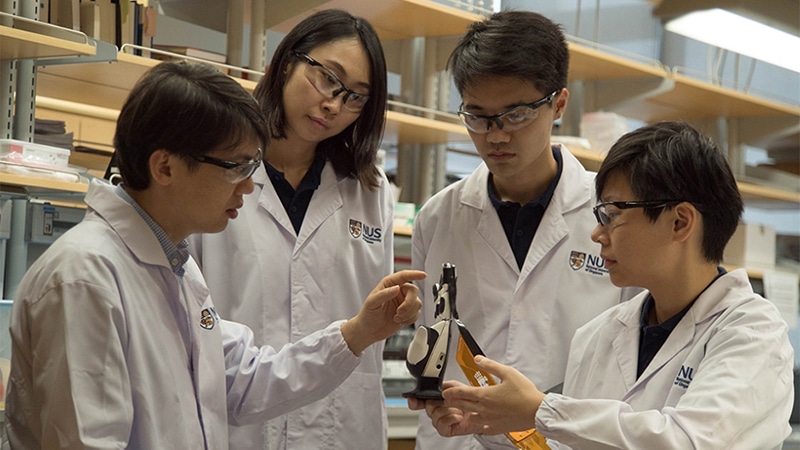Artificial skin having a sense of touch or ability to feel is a major research goal for engineers working on improving prosthetic technology. In this mission to give robots a sense of touch, researchers have created materials with sensors or AI to identify and visualize the object, but these techniques have several limitations.
Most existing electronic skins have interlinked wiring systems which required to make hundreds of independent sensors work together. This can make them sensitive to damage and difficult to scale up.
Now, the researchers from NUS (National University of Singapore) have developed an artificial skin that works using a network of sensors connected via a single electrical conductor, unlike the bundles of wiring systems in existing e-skins. The skin is more responsive than anything similar developed in the past, according to the team.

This ultra-responsive artificial nervous system called the Asynchronous Coded Electronic Skin (ACES) can be integrated into any other devices such as prosthetic arms, clothing, and assistive devices. What’s more advantageous is its reliance on a single relatively strong cable, because if the lone cable is broken, it should be pretty easy to find the fault and solder it back together as compared to hundreds of very fine wires.
“The human sensory nervous system is extremely efficient, and it works all the time to the extent that we often take it for granted. It is also very robust to damage. Our sense of touch, for example, does not get affected when we suffer a cut. If we can mimic how our biological system works and make it even better, we can bring about tremendous advancements in the field of robotics where electronic skins are predominantly applied,” elaborating on the inspiration, Asst Prof Tee, who has been working on electronic skin technologies for over a decade in hope of giving robots and prosthetic devices a better sense of touch.
NUS researchers claimed that ACES can detect touch over 1000 times faster than our very own sensory nervous system. For instance, the system has the ability to detect changes across multiple sensors within 60 nanoseconds. Besides, when placed over different objects, ACES can identify their texture, shape, and softness or hardness within ten milliseconds, ten times faster than the blinking of an eye. This is achieved by the high fidelity and capture speed of the ACES system.
The ACES platform is highly robust to physical damage. A common electrical conductor allows ACES-enabled electronic skins to continue functioning as long as there is one connection between the sensor and the conductor, making them less vulnerable to damage.
“Scalability is a critical consideration as big pieces of high performing electronic skins are required to cover the relatively large surface areas of robots and prosthetic devices,” explained Asst Prof Tee. “ACES can be easily paired with any kind of sensor skin layers, for example, those designed to sense temperatures and humidity, to create high-performance ACES-enabled electronic skin with an exceptional sense of touch that can be used for a wide range of purposes,” he added.
The innovation is first reported in the prestigious scientific journal, Science Robotics.
